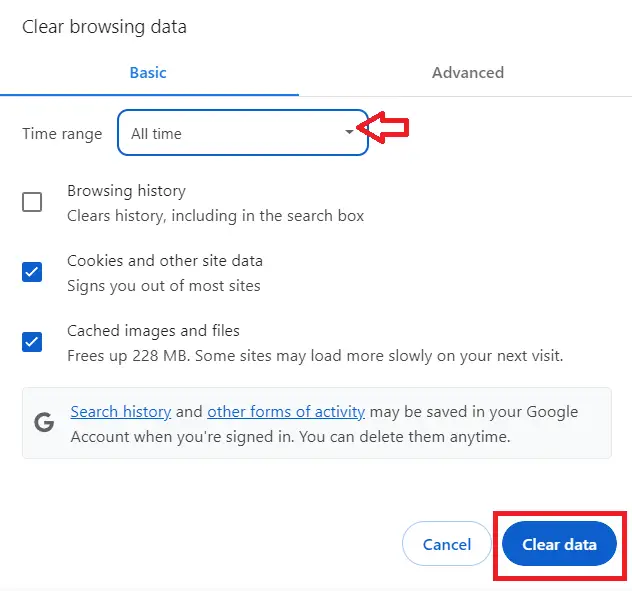Encountering a “409 Conflict Error” while browsing can be quite perplexing, especially if you’re unsure about how to tackle this issue.
This error typically arises when there’s a conflict between the client’s request and the current state of the resource on the server. It might leave you feeling stuck, wondering how to proceed.
But there’s no need to worry! I’m here to guide you through this.
What is a “409 Conflict” error?
The “409 Conflict” error is a type of HTTP status code.
It’s used to signal that there’s a disagreement between the client’s request and the current state of the resource.
This error is often seen when the client attempts to change a resource that isn’t in the state it expects.
Root causes of “409 Conflict” error?
- This error is typically caused by a conflict in the HTTP request.
- It can happen when the resource being requested isn’t in the state that the client expects, or if fulfilling the request would create a conflict.
- This error is common when a PUT request is made to update a resource.
- If there are conflicting values in the PUT payload, this can trigger a 409 error.
- For instance, if certain fields are mistyped, the server can detect these inconsistencies and reject the request.
How to fix the “409 Conflict” error?
There are several solutions available to fix this problem.
If the cause of the problem is unclear, you might need to experiment with various approaches.
![409 Conflict Error HTTP Status Code [Solutions]](https://itsourcecode.com/wp-content/uploads/2024/01/409-Conflict-Error-HTTP-Status-Code-Solutions-1024x574.png)
Here are some solutions to resolve the “409 Conflict” error:
Solution 1: Verify the Requested URL
Make sure the URL you’re requesting is accurate.
The issue could be as simple as a typo in the URL. If that’s the case, correcting it will allow you to carry on with your usual tasks without encountering the 409 error.
Simply reloading or refreshing the page can rectify the issue.
You can do this by clicking the refresh button on your browser or pressing F5 on your keyboard.
Sometimes, problems are fixed by the administrator. This means that the person who runs the website might have solved the issue while you weren’t using the site.
Solution 2: Clear Your Browser Cache and Cookies
Your browser saves page data in a cache, which could be causing the error clearing them could help.
When you clear them, you get new info from the website’s server.
If you use Google Chrome, here’s how to clear its cache:
- Click the three dots in the top-right corner of your window. You can also use the keyboard shortcut (Ctrl + H).
- Go to History History.
- Click on Clear Browsing Data.

- A new window will appear. Choose the Time range, if you wish to erase all data, select All Time.

- Select what you’d like to clear- this could be browsing history, cookies, and other site data, or cached images and files.
- Then, hit the Clear Data button.
Solution 3: Undo Recent Updates
If you’ve recently updated your website or server configurations, consider undoing these updates.
To address a “409 Conflict” error, you might think about reverting your WordPress website to an earlier version.
This step can assist you in determining if the main software was at odds with other tools on your site.
But remember, it’s crucial to create a backup of your website before you begin this process.
If you skip this step, you could lose significant modifications made with the recent software update.
Once you’ve identified and addressed the issue, you can swiftly return your site to its previous condition.
Solution 4: Disable Your WordPress Plugins
If you’re using WordPress, try disabling your plugins.
If you’re hesitant about fully downgrading your website, there’s an alternative. You can disable your plugins and third-party tools.
This action often helps to resolve any conflicts by removing potentially conflicting software.
To carry out this process, navigate to the Plugins page on your WordPress dashboard. From there, you can select and deactivate all your plugins:
Solution 5: Check Your Server Configuration
If you’re a website administrator, you can check your server configuration.
If all else fails, you can always examine your server’s configuration.
Typically, you should be on the lookout for:
Extended external requests
Plugin code that hasn’t been optimized
Slow database queries
Manually checking these could be time-consuming and inefficient; thankfully, numerous tools are available to assist you with this task.
Additional Solutions
- Disable Your WordPress Theme
Consider disabling your WordPress theme.
- Try the Request Again
Sometimes, simply retrying the request after getting the latest data from the server can resolve the conflict.
- Ensure Data Validity
Make sure the data in your request is valid and follows any validation rules set by the server.
Conclusion
The “409 Conflict” error happens when there’s a mismatch between the client’s request and the server’s resource state.
While this situation may be annoying, resolving the 409 error is quite straightforward.
From the client’s perspective, you can correct any misspellings in the requested URL, empty your browser cache, and remove browser extensions.
On the other hand, as a website administrator, you can address this conflict by removing the main software and plugins or by examining your server setup.
By following the provided solutions above, you can rest assured that you’ll be able to resolve this issue.
For further learning, you can also check the following HTTP status code:

![409 Conflict Error HTTP Status Code [Solutions]](https://itsourcecode.com/wp-content/uploads/2024/01/409-Conflict-Error-HTTP-Status-Code-Solutions.png)